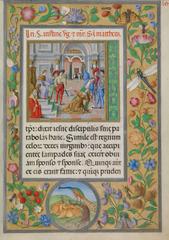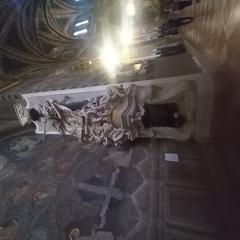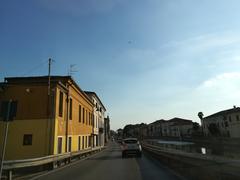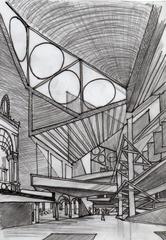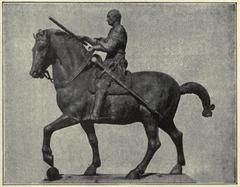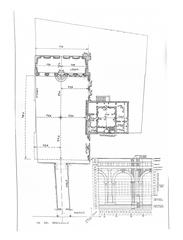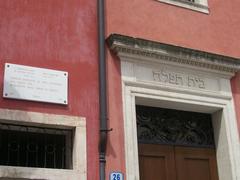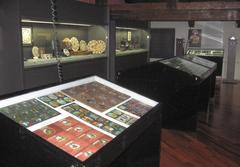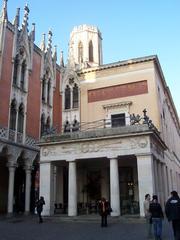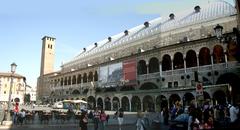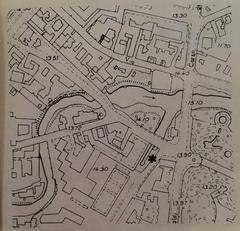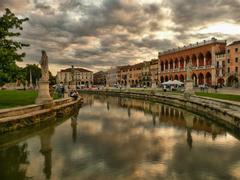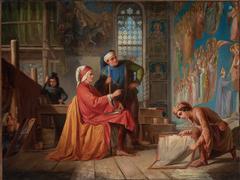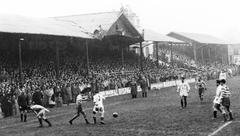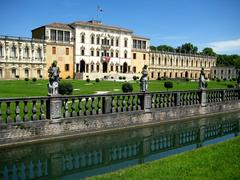Palazzo Dottori Visiting Hours, Tickets, and Travel Guide in Padua
Date: 14/06/2025
Introduction to Palazzo Dottori in Padua
Nestled in the heart of Padua’s vibrant historic center, Palazzo Dottori is a distinguished symbol of the city’s academic legacy and architectural evolution. Closely connected to the University of Padua—established in 1222 and among Europe’s oldest universities—this palatial edifice has long been a beacon for scholars, intellectuals, and civic leaders. Its name, “Dottori” (Doctors), reflects the close association with the learned elite who have shaped Padua’s reputation as a center of Renaissance scholarship and innovation. Whether you are passionate about architecture, history, or simply exploring northern Italy’s cultural heritage, a visit to Palazzo Dottori offers a deep dive into centuries of academic and architectural transformation.
With its blend of medieval, Renaissance, and neoclassical elements—visible in its arched windows, frescoes, and courtyards—Palazzo Dottori stands among Padua’s most significant historical sites. This guide provides essential information about visiting hours, ticketing, accessibility, and nearby attractions, while also illuminating the palazzo’s cultural and academic significance. Understanding the palazzo’s central role in Padua’s history will enrich your visit, revealing stories from Galileo’s lectures to the pioneering Anatomical Theatre, and celebrating the enduring spirit of scholarship that still thrives within its walls (venetoway.com; unipd.it; myitaliandiaries.com).
Contents Overview
- Introduction
- Origins and Early History
- Architectural Evolution
- Cultural Significance
- Visiting Palazzo Dottori: Hours, Tickets, and Accessibility
- Travel Tips and Nearby Attractions
- Frequently Asked Questions (FAQ)
- Conclusion
- Sources and Further Reading
Origins and Early History
Palazzo Dottori stands as a testament to Padua’s legacy as a center of learning and civic pride. Its origins are rooted in the city’s medieval and Renaissance periods, when Padua emerged as a prominent academic hub in northern Italy. The term “Dottori” alludes to the city’s celebrated university culture, with the University of Padua founded in 1222. Historically, “Gran Dottori” referred to distinguished graduates and scholars, emphasizing the building’s strong connection to Padua’s intellectual elite (venetoway.com).
While the precise construction date is uncertain, architectural and historical evidence suggests that the palazzo took shape during the late Middle Ages or early Renaissance—a period marked by significant urban development. Palazzi such as this served both as private residences and symbols of social status for Padua’s leading families and academic societies.
Architectural Evolution
Palazzo Dottori’s architecture mirrors the stylistic transitions from the 14th to the 17th centuries. Initially constructed as a fortified medieval structure, the building evolved over time—especially during Padua’s prosperity under Venetian rule and the spread of Renaissance ideals.
Exterior Features:
- Symmetrical façade using local stone and brick
- Ornamental cornices and Renaissance arched windows
- Classical entrance portal
Interior & Courtyard:
- Internal courtyard for social and ceremonial functions
- Frescoed halls, vaulted ceilings, and period staircases
- Heraldic motifs and painted ceilings, reflecting humanist traditions
These features exemplify the fusion of Gothic, Renaissance, and Baroque influences typical of Padua’s historical core (wanderlog.com; nomads-travel-guide.com; suchitaly.com).
Cultural Significance
The cultural importance of Palazzo Dottori is inseparable from Padua’s identity as a city of scholars and innovators. The University of Padua has attracted students and intellectuals from across Europe, nurturing a vibrant academic community for centuries (venetoway.com). Palazzo Dottori functioned as a residence, meeting hall, and administrative center for university-affiliated societies, and has hosted countless academic ceremonies and debates.
It remains integral to Padua’s collective memory, contributing to the exceptional preservation of medieval and Renaissance architecture in the city’s UNESCO-listed historic center (italien-entdecken.de). Its proximity to landmarks such as the Scrovegni Chapel and Orto Botanico further enhances its cultural value (turismopadova.it).
Visiting Palazzo Dottori: Hours, Tickets, and Accessibility
Opening Hours
Palazzo Dottori is generally open to visitors Tuesday to Sunday, 9:00 AM to 6:00 PM, and is closed on Mondays and public holidays. It may also close for special university events or maintenance. For current information, check the University of Padua’s official tour page (unipd.it).
Guided Tours
Access to the interior is only possible through guided tours, available in Italian, English, French, Russian, Spanish, German, and Chinese. Special thematic tours may be offered on weekends and holidays, granting access to unique spaces such as the Anatomical Theatre, Rectorate, and the Galileo Galilei Great Hall.
Tickets & Reservations
- Advance Booking: Strongly recommended via the University’s booking portal, by phone (+39 049827.3939, 9:00–17:00), or email ([email protected])
- Ticket Prices: Standard guided tour tickets range from €10–15 for adults, with discounts for students, seniors, and children
- Group Bookings: Arrive at least 30–45 minutes early; same-day bookings are not available (cappelladegliscrovegni.it)
Accessibility
While the main entrance and ground-floor spaces are accessible, some upper floors and historic rooms may only be reached by stairs. Contact the tour office ahead of your visit for specific needs and arrangements.
Visitor Guidelines
- Photography is generally permitted without flash or tripods
- Large bags and umbrellas must be checked at the entrance
- Food and drink are not permitted inside
Travel Tips and Nearby Attractions
Getting There
- By Train: 15-minute walk from Padua’s main railway station
- By Tram: Sir 1 tram line (every 10 minutes) to Ponti Romani stop
- By Bus: Lines 6 and 10 from the station; check the Busitalia website for schedules
- Parking: Public parking at Park Rabin, Piazza Insurrezione, and Padova Centro Park (note: ZTL restrictions in the historic center)
Best Time to Visit
Spring and early autumn offer pleasant weather and fewer crowds.
Facilities
- Multilingual leaflets and information materials available
- Public restrooms onsite for tour guests
- Numerous cafés and restaurants nearby; no food service within the palace
Recommended Itinerary
Consider combining your visit to Palazzo Dottori with:
- University of Padua Botanical Garden (Orto Botanico): UNESCO World Heritage Site (sacredwanderings.com)
- Palazzo della Ragione: Medieval law court and market (keepmoosing.com)
- Scrovegni Chapel: Giotto’s frescoes (cappelladegliscrovegni.it)
- Prato della Valle: One of Europe’s largest squares (misstourist.com)
All sites are within walking distance for a full day of cultural discovery.
Architectural Highlights and Historical Features
Courtyards and Porticoes
The palazzo features Renaissance courtyards lined with hundreds of coats of arms—visual tributes to former rectors, professors, and alumni (placesofjuma.com).
Aula Magna
The grand ceremonial hall, adorned with frescoes and portraits, hosts university events and graduations (myitaliandiaries.com).
Anatomical Theatre
Inaugurated in 1595, this is the world’s oldest permanent anatomical theatre, designed for pioneering medical demonstrations (placesofjuma.com).
Lecture Halls and Libraries
Richly decorated with wood paneling, frescoes, and historic manuscripts, these spaces highlight the university’s scholarly tradition.
Frequently Asked Questions (FAQ)
What are the visiting hours of Palazzo Dottori?
Open Tuesday to Sunday, 9:00 AM to 6:00 PM; closed Mondays and certain holidays. Always verify on the official site.
How do I book tickets?
Advance booking is required via the University of Padua’s website, phone, or email.
Are guided tours available in several languages?
Yes—tours are offered in Italian, English, French, Russian, Spanish, German, and Chinese.
Is Palazzo Dottori accessible to visitors with disabilities?
Some areas are accessible, but upper floors and historic rooms may have limited access. Contact the tour office for assistance.
Can I take photos inside?
Photography is allowed in most areas, excluding flash and tripods to protect artworks.
What are the nearby attractions?
Scrovegni Chapel, Palazzo della Ragione, Orto Botanico, and Prato della Valle.
Plan Your Visit
- Book in Advance: Tours fill up quickly, especially in peak season.
- Arrive Early: Arrive 30 minutes before your tour for ticket collection.
- Dress Comfortably: Modest attire and comfortable shoes are recommended.
- Language Preferences: Ensure your tour is in your preferred language.
- Consider a City Pass: The Urbs Picta Card or PadovaCard offers discounts and public transport access (cappelladegliscrovegni.it).
- Tourist Information: Visit the Tourist Information Office for maps and advice.
Contact Information
- Address: Via VIII Febbraio, 2, 35122 Padua, Italy
- Tour Bookings: +39 049827.3939 (9:00–17:00), [email protected]
- Official Website: University of Padua – Palazzo Bo
Historical Significance and Notable Facts
- The University of Padua was founded in 1222; Palazzo Dottori (Bo) has been its seat since 1493.
- The Anatomical Theatre (1595) is the oldest permanent anatomical theatre in the world.
- Famous scholars like Galileo Galilei and Elena Lucrezia Cornaro Piscopia taught and studied here (myitaliandiaries.com).
- The palazzo’s courtyards are adorned with hundreds of coats of arms, representing centuries of academic tradition.
Visual Suggestions
- Facade: High-resolution image of Palazzo Dottori with alt text “Palazzo Dottori facade in Padua historic center.”
- Interiors: Photos of the Anatomical Theatre, Aula Magna, and Cortile Antico.
- Map: Visual showing Palazzo Dottori’s location in relation to other Padua landmarks.
Summary and Visitor Recommendations
Palazzo Dottori is a cornerstone of Padua’s historic and academic identity, embodying centuries of innovation, scholarship, and architectural refinement. From its Renaissance courtyards to the famed Anatomical Theatre and grand Aula Magna, the palazzo invites visitors to explore the legacy of one of Europe’s most storied universities. Guided tours in multiple languages, accessible facilities, and proximity to major attractions make it a must-visit for anyone seeking to immerse themselves in Padua’s unique cultural landscape.
For the best experience, book your tickets in advance, align your itinerary with local events, and use resources such as the Audiala app for guided tours and up-to-date information. Let Palazzo Dottori be your gateway to discovering Padua’s enduring spirit of curiosity and learning (unipd.it; venetoway.com; myitaliandiaries.com).
Sources and Further Reading
- Palazzo Dottori in Padua: History, Visiting Hours, Tickets, and Cultural Significance (venetoway.com)
- Palazzo Dottori Padua: Visiting Hours, Tickets & Historical Guide (guidetourism.net)
- Palazzo Dottori Visiting Hours, Tickets & Guide to Padua Historical Sites (unipd.it)
- Palazzo Dottori Visiting Hours, Tickets & Guide to Padua’s Historic University Landmark (placesofjuma.com), (myitaliandiaries.com)
